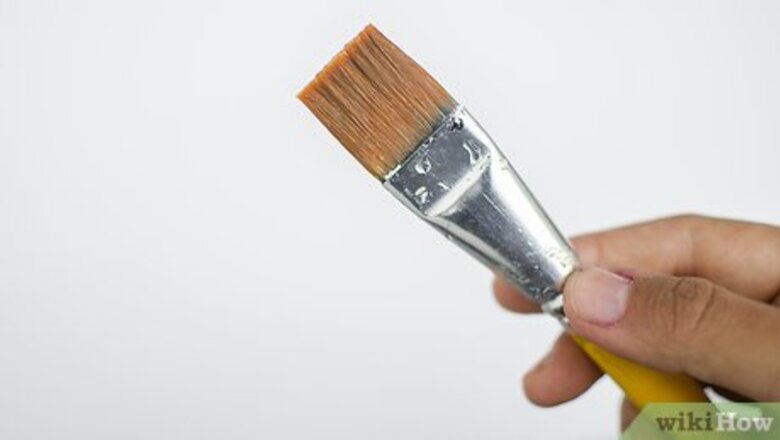
views
Blending Wet Paint with Wet Paint
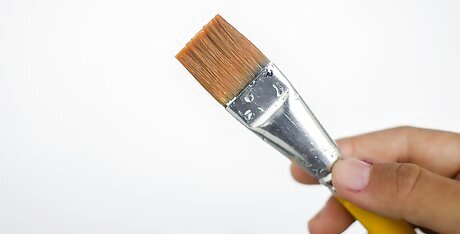
Start with a damp brush. Soak your brush in water for a few minutes, then shake out the excess water. You don't want your brush to be dripping. You can brush it gently over a towel if you want. Many brushes are good for blending, but you can try a flat, fan, round, or filbert brush to begin with. If you're afraid of the paint drying out too quickly, you can paint your canvas with a bit of water, too. You do need to work quickly with this method, though.
Paint one color in large strokes across the top of your canvas. Try to go back and forth across the whole canvas in a mostly straight line. Cover at least 1 to 2 inches (2.5 to 5.1 cm) with the color. For instance, you might start with dark blue on the top edge. You may want to cover more of the canvas, depending on how much of it you want to be just that color. You can also use this technique going in any direction across your canvas.
Brush a little bit of the second color across the canvas. Without rinsing your brush, dip your brush into the color you're working towards. Paint along the bottom edge of the color on the canvas, moving back and forth as you go. Move down the canvas a little bit with the color, using broad strokes to blend it in with the color above. As you move back and forth, it should blend into the first color, lightening a bit as you move down. For instance, if you're blending from dark blue to white, dip your brush into a little white.
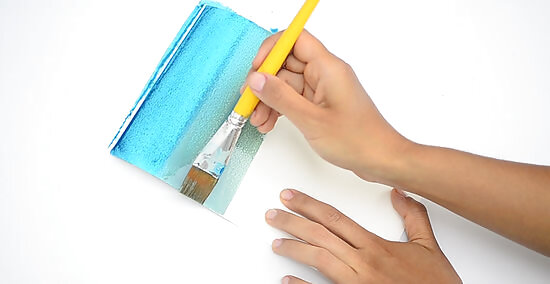
Use a bit more of the second color below the first color. Dab a bit more of the new color on your brush, and paint across the bottom edge of the current color. Move back and forth across the canvas in broad strokes, but move the strokes up and down to blend it into the previous color. In the example, add a bit more white to your brush without washing it out. Keep going down the canvas, adding a bit more of the new paint each time. Use the same process across the whole canvas. Each time you add more of the new color, blend it in with broad strokes to the color above. Remember to work quickly, as once the paint dries, you can't use the wet-on-wet method.
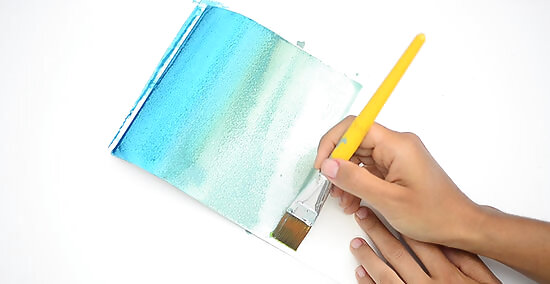
Finish off at the bottom with just the new color. Rinse off your brush first, then dip it in the new color. Paint it across the bottom of the canvas, and then move up a little to blend it into the color above. Go back and forth across the canvas to fully blend it in. So if you're blending to white, rinse all the blue out of your brush, then put just white on it to finish the bottom.
Trying the Wet-on-Dry Paint Method
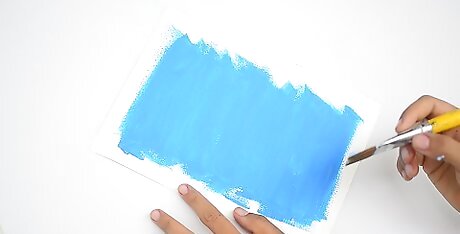
Paint a base coat in one of your main colors. Typically, you'll choose the darker of the two colors you're using. Paint broad strokes across the canvas, covering as much of it as you want with the color. Let the base coat dry completely. For example, if you want to paint a blended sky, paint a solid medium blue background and let it dry completely. One nice thing about this method is you don't have to work as quickly.
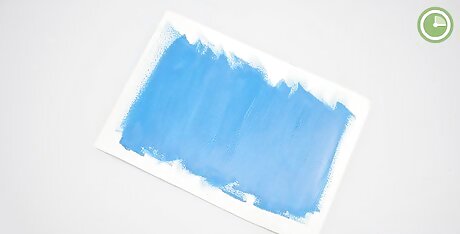
Wait for the base coat to dry. The base coat doesn't need to be completely dry before you continue, but it should be mostly dry. That way, you can easily add another color on top of the base coat. If the base coat is thin enough, it should dry quickly, within 5-10 minutes.
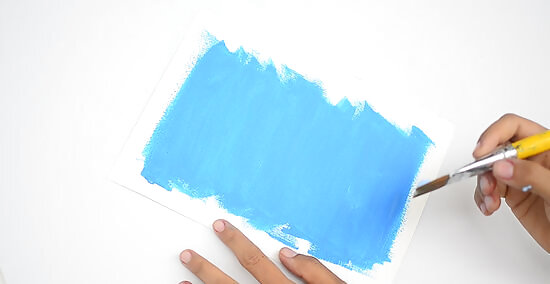
Begin painting one edge with your lighter color. Dip your paintbrush into the lighter color, and paint along one edge of the darker color. Create a solid line of color along that edge. Start with quite a bit of paint on your brush.
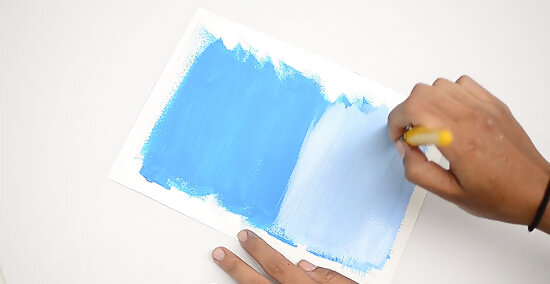
Move the color out towards the middle of the base coat. Without adding more paint to the brush, use broad strokes to expand the inner edge towards the middle of the dry paint. As you go, you'll have less and less paint on your brush, so it will get lighter.
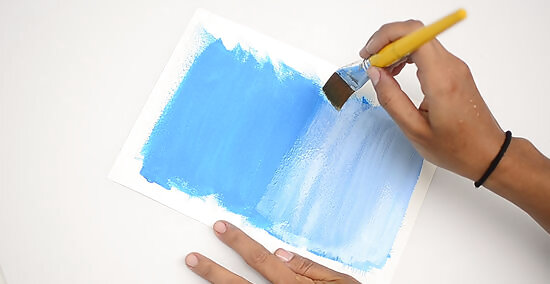
Keep moving towards the other edge until you're happy. If your brush gets too dry, you can add a little water, which will help the paint go farther. Continue to use broad strokes along the edge, which will help make blending easier.
Adding Acrylic Glazing
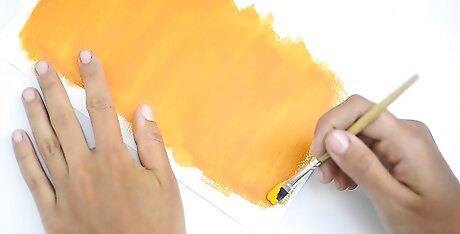
Paint a solid background with your first color. Start with your darker color, and paint as much of the canvas as you want to cover. Use broad strokes across the canvas to add the color. You can also use this method without a base coat. Just use the glaze to blend the paint down to a more translucent color that just barely covers the canvas.
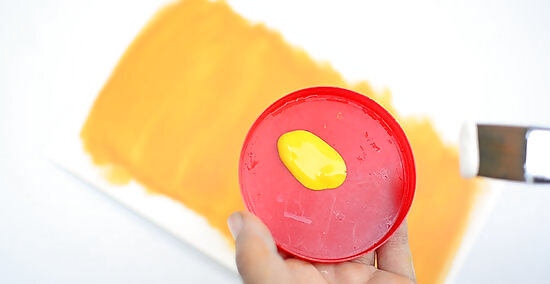
Mix your second color with a dollop of acrylic glazing medium. Acrylic glazing medium makes your paint a bit more transparent. Use your brush to pick up a large amount of the glazing and the paint color you want to blend. Acrylic glazing medium comes in gloss, semi-gloss, and matte, so you can use whatever your preference is. You can work more slowly with this method. The glazing liquid does not dry as fast as the paint itself does, which gives you more time to perfect the blending.
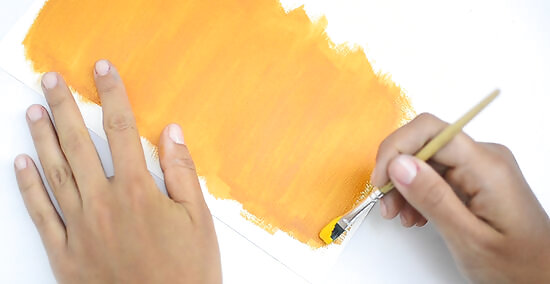
Paint the color and the glazing liquid on the canvas. Start on one edge of the base coat. Sweep your brush back and forth across the edge to apply the blending color and the glazing liquid together. Start moving towards the middle of the base coat.
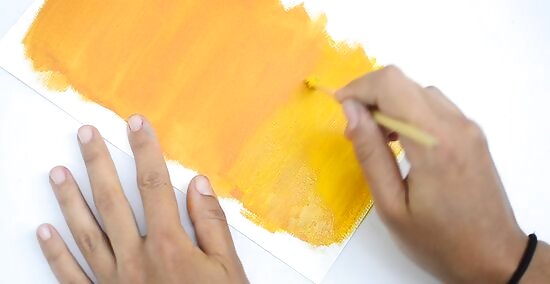
Move towards the center, adding glaze as needed. As you get towards the center, you might want a bit more glaze to blend it in better with the base coat underneath. It will get slightly more transparent. Use broad strokes to smooth it out.
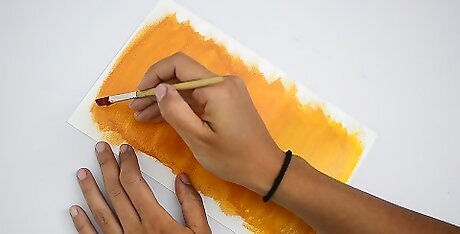
Add a darker color on the other edge if you'd like. If you decide the contrast isn't enough, mix glaze with a color that's darker then your base coat. Move towards the middle with it, using broad strokes back and forth to mix it in. For instance, if you had a medium blue in the background, you might add a light blue on one edge and a dark blue on the other.



















Comments
0 comment